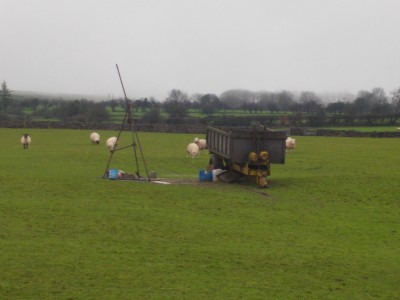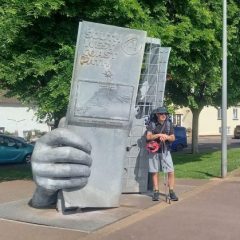8th December:
Got an invite by Sarah Payne to visit the recently accessed Tankard Mineshaft and offer my opinion on prospects and how best to proceed. Met up with Sarah and Duncan Simey at the Hunter’s and headed up the road to the field where the mineshaft is located, here we were joined by Tim Payne the farmer and landowner. The shaft is covered by a manhole lid and a tripod is currently in position.

The shaft is c.10m depth with a ginging for the initial c.3m leading to a muddy base with plenty of dead animal bones, apparently discarded lambs from many years ago. The miners have moved a quantity of rocks and stacked them in various nooks and cranny’s, very much like walls of ‘deads’ in active mines. There is a good number of loose rocks and the base of the ginging shows some signs of collapse, there is some requirement for consolidation before too much exploration proceeds.
The prospects, there is some space visible beyond some rather precarious perched boulders, where a rift appears to lead off the shaft, this is not clear at the moment and some clearance work in the future will allow a better assessment of the way ahead. There is the possibility that the ‘floor’ is not quite as solid as it might at first appear. I would suggest attaching to a rope when digging down, just to be on the safe side. Anecdotal evidence suggests that the mineshaft was once deeper.
The location of the mine shaft suggests that there might be some relationship to the notorious Tankard Hole that was closed a number of years ago due to it’s instability. It has been postulated that the shaft was an exploratory dig by miners searching for ore and terminated when open cave was encountered and this does seem a reasonable assumption at this time.

